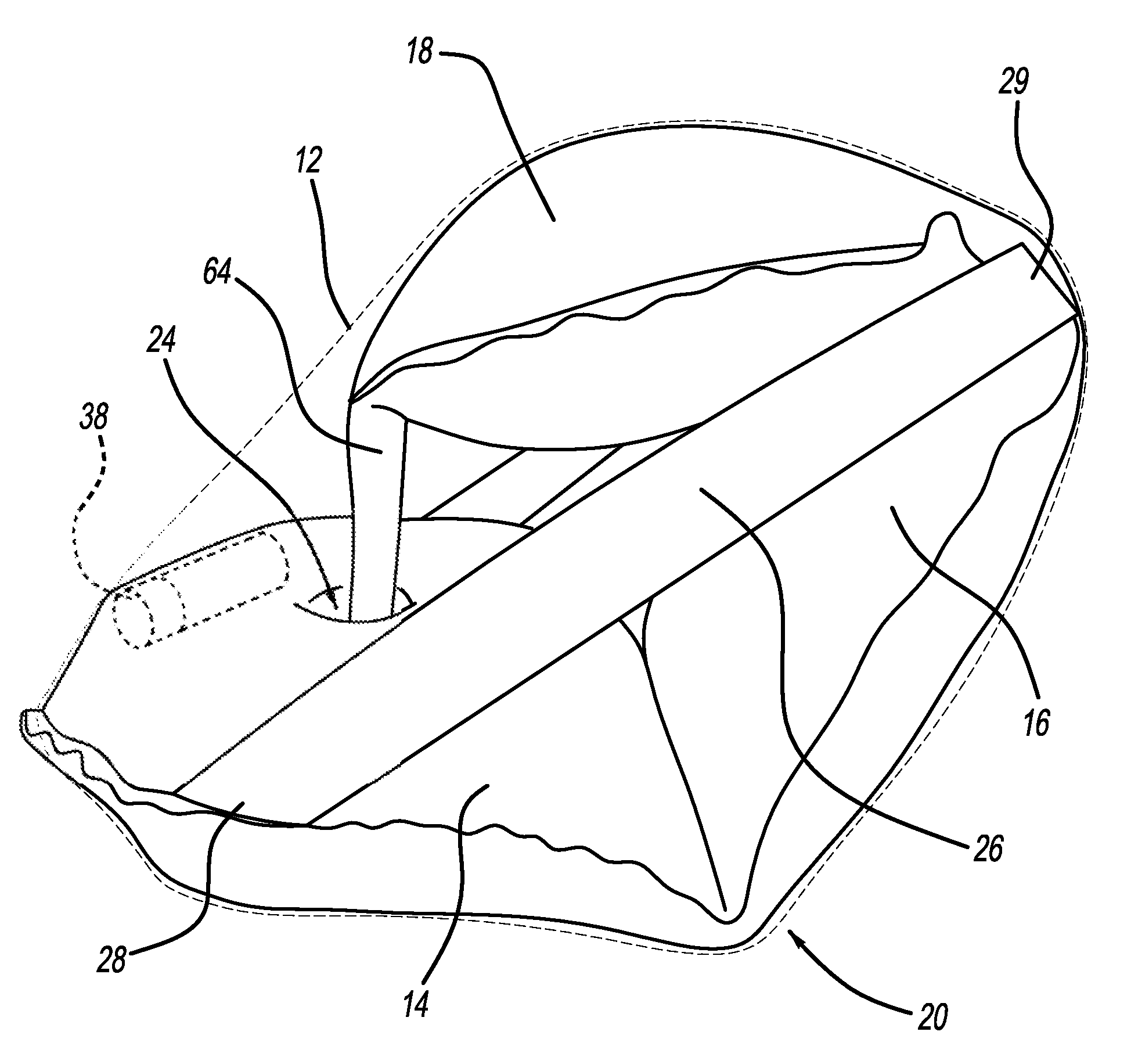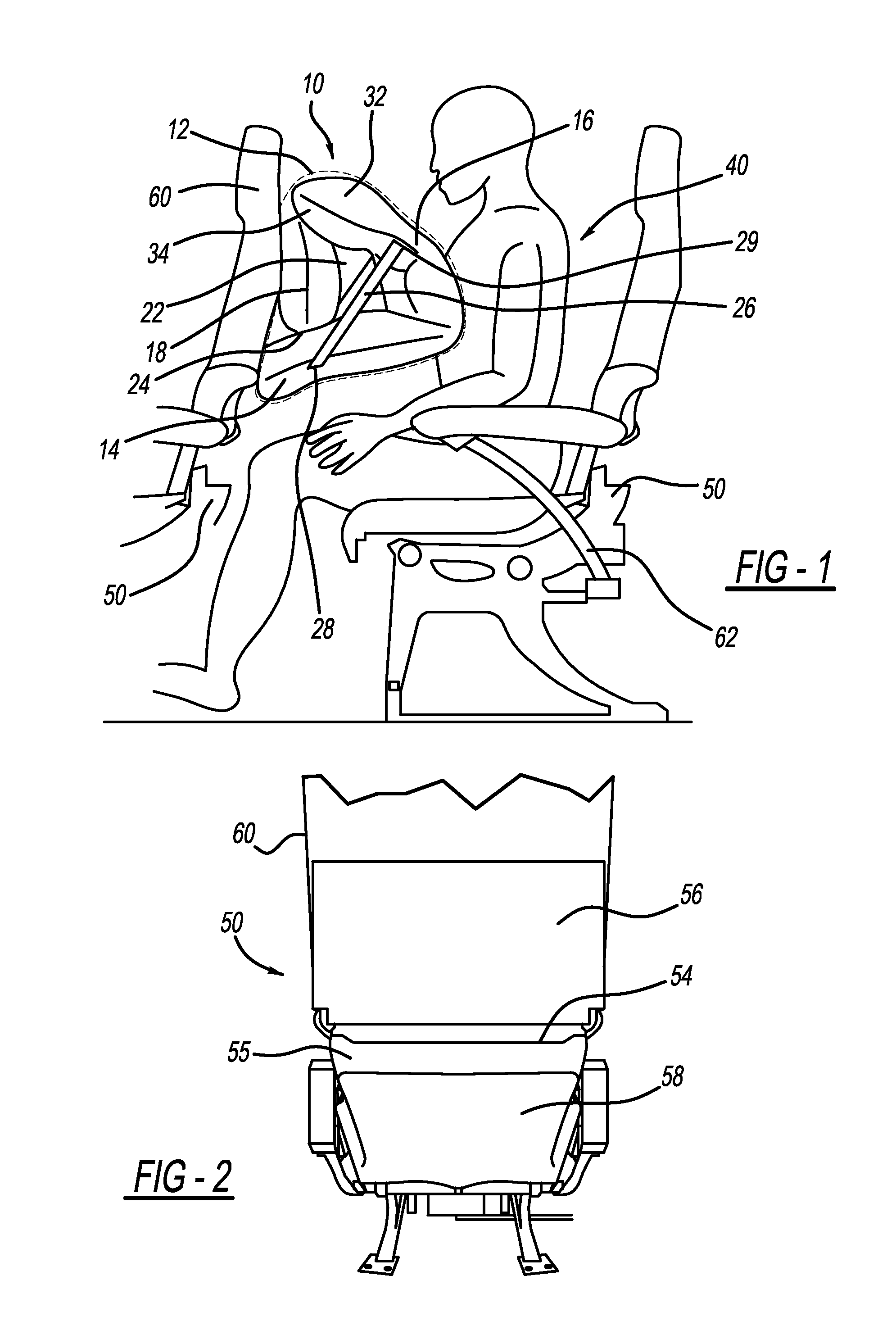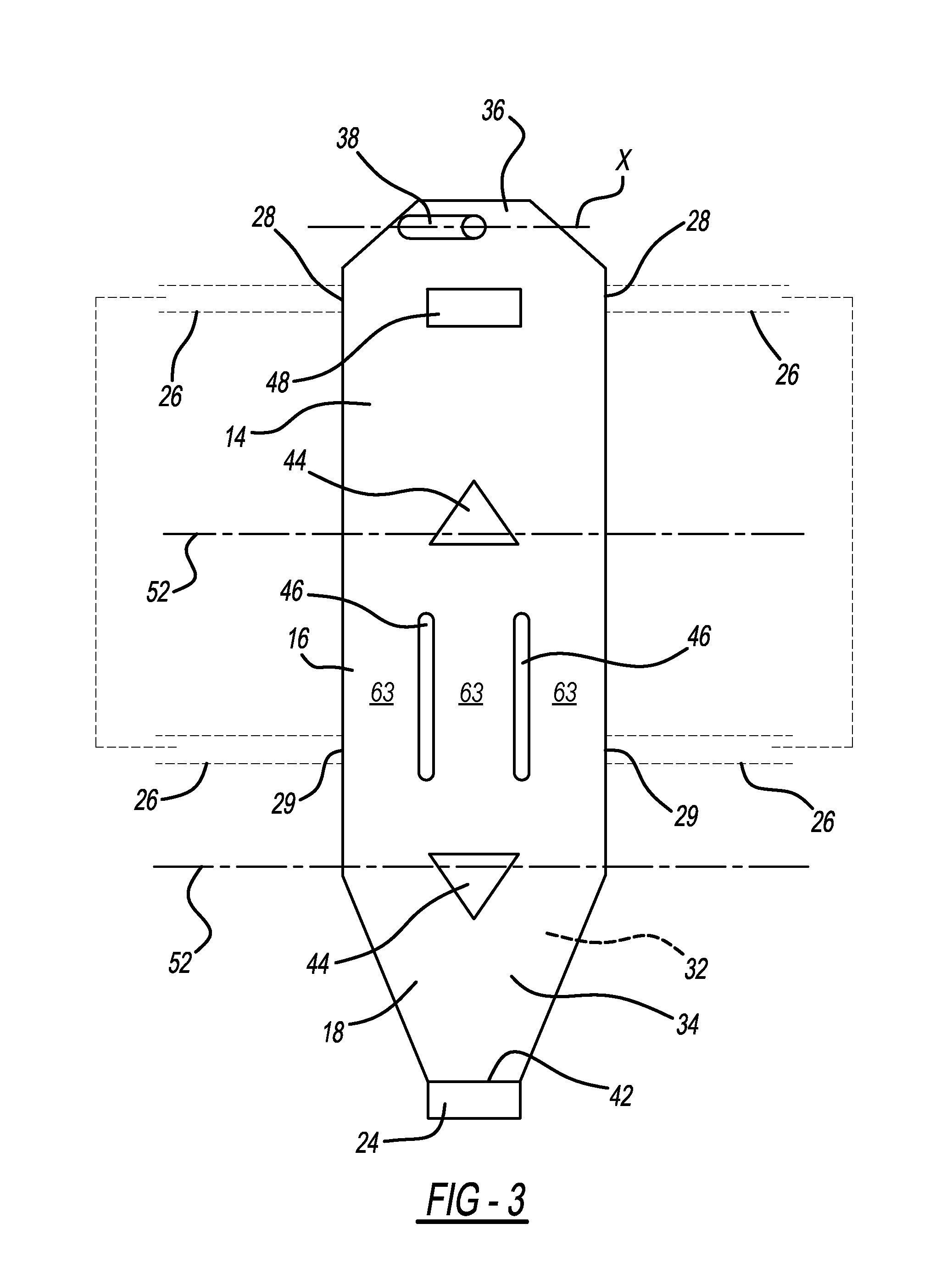Airbag with low-volume structure
a low-volume, airbag technology, applied in the direction of pedestrian/occupant safety arrangement, vehicular safety arrangment, vehicle components, etc., can solve the problems of high head acceleration, head injuries, packaging challenges, etc., and achieve the effect of increasing the structural stiffness of the airbag
- Summary
- Abstract
- Description
- Claims
- Application Information
AI Technical Summary
Benefits of technology
Problems solved by technology
Method used
Image
Examples
second embodiment
[0040]FIGS. 4 and 5 show an airbag 20 according to a FIG. 4 shows the airbag in the inflated state, while FIG. 5 provides a plan view onto the inner fabric layer 34. Airbag 20 is also based on the concept that the enveloping volume 12 is greater than the volume of the airbag itself, where the enveloping volume 12 defines a volume that a conventional airbag would need to fill for providing outer surfaces that correspond to those of the shown embodiment.
[0041]The outer contour of the enveloping volume 12 of airbag 20, however, resembles a quadrilateral shape rather than a triangle. This is due to the end portion 24 being connected to the third section 18 via an intermediate uninflated portion 64. This uninflated portion 64 acts like a tether that allows the third portion 18 to form a smaller angle relative to the first portion 14 and to extend nearly parallel to the first portion 14.
[0042]The side tethers 26 are attached to the attachment points 28 on the first section 14 as describe...
third embodiment
[0043]Now referring to FIG. 6 an airbag 30 is shown in a plan view onto the inner fabric layer 34. The airbag 30 has one of the uninflated islands 44 defining the bend axis 52 between the second section 16 and the third section 18. The other bend axis 52 between the first section 14 and the second section 16 is defined by an uninflated island 66 that generally extends from a port area 68 to the bend axis 52 between the first section 14 and the second section 16.
[0044]The port area 68 is shown as bounded by a broken line that indicates a seam 76 that does not extend through both the outer fabric layer 32 and the inner fabric layer 34. Instead, the port 70 is in fluid communication with the first section 14.
[0045]In a similar manner, an end portion 74 on the third section 18 has a port 72 in fluid communication with the third portion 18. Thus, the end portion 74 is not an uninflated area and is surrounded by seam 76 indicated by a broken line that does not extend through the outer fab...
PUM
 Login to View More
Login to View More Abstract
Description
Claims
Application Information
 Login to View More
Login to View More - R&D
- Intellectual Property
- Life Sciences
- Materials
- Tech Scout
- Unparalleled Data Quality
- Higher Quality Content
- 60% Fewer Hallucinations
Browse by: Latest US Patents, China's latest patents, Technical Efficacy Thesaurus, Application Domain, Technology Topic, Popular Technical Reports.
© 2025 PatSnap. All rights reserved.Legal|Privacy policy|Modern Slavery Act Transparency Statement|Sitemap|About US| Contact US: help@patsnap.com



